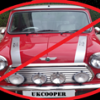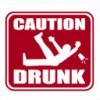
Bleeding Brakes For The First Time
#1

Posted 11 August 2012 - 10:35 AM
So Is there anything we should of done with a completely dry brand new system? And does having the handbrake in affect it in anyway
We've checked for leaks and can't find any
So any help will be amazing, I've got less than 4weeks to get Vini finished
Cheers
YetI
#2

Posted 11 August 2012 - 10:39 AM
#3

Posted 11 August 2012 - 10:59 AM
#4

Posted 11 August 2012 - 11:08 AM
#5

Posted 11 August 2012 - 11:32 AM
Properly adjusted drums are essential for decent pedal feel.
#6

Posted 11 August 2012 - 02:52 PM
There are some easily overlooked points that can happen when a person works on the brakes. Let us know what is new and what other work (even not related to the brakes) you have done recently.
#7

Posted 11 August 2012 - 04:05 PM
note: rear brakes fully adjusted, no leaks & no air bubbles, DOT 4 fluid & Type 4 tandem used.
#8

Posted 11 August 2012 - 04:28 PM
#9

Posted 11 August 2012 - 04:35 PM
Apart from that, I suspect that air becomes trapped at several high points in the pipework, and will stay there unless there is a very good flow of fluid to persuade it to shift. But if it is not expelled from the nipple, it will just creep back to the high point again. It may help to jack up the rear of the car as high as you can safely achieve while doing the first two nipples at the rear.
Last time I did one, I used an Eezibleed, and still had to kick the pedal hard and fast a few times per nipple. And, I had to go round it again more than once.
I wish we could still get ABV bleed valves, as they solve this problem completely.
#10

Posted 11 August 2012 - 08:37 PM
Yeti, try a couple of things, some of which you may or may not already be aware of.
Start by adjusting the rear drum brakes. When properly adjusted an elevated rear wheel will not free-wheel when spun by hand. The wheel will spin through maybe 1 to 1.5 revolutions and stop. There will be audible drag that can also be felt when the wheel is spun. Anything looser than that means that the brakes will require more pedal travel and be a bit spongy.
You said the brake shoes did not need replacing. However, if you removed them, they have to go back on in the correct position or the pedal can be spongy. The shoes will have the friction material relieved at one end of the arc. When the shoes are installed the relieved area will be towards the top on the front shoe and towards the bottom on the rear shoe. Again, if your shoes are on wrong the pedal feel and travel will not be correct.
Lastly, if the hydraulics was opened allowing air to get in, you need to bleed the brakes slowly and manually using the two-person method. You must take great care to not shift the spool inside the rear proportioning valve during brake bleeding.
The two man method is as follows:
1) top the reservoir off with fluid.
2) attach a clear hose to the bleed nipple furthest from the master cylinder.
3) place the other end of the hose in a catch jar.
4) open the bleed nipple 1/2 turn and call "DOWN" to your assistant.
5) your assistant SLOWLY, SLOWLY, SLOWLY pushes the brake pedal down to force fluid through the lines and into your catch jar.
6) when the pedal is fully down your assistant holds the pedal down and calls "DOWN" back to you.
7) you close the bleed nipple and call "RELEASE" to your assistant who lets the pedal rise to the top again.
You repeat steps 4 through 7 until no bubbles/air come through the clear hose. Periodically check the reservoir and top up the fluid as needed.
This method is sometimes called the flush method. It is very handy when you are trying to replace all the fluid without compressing any air and when you need to avoid shifting the proportioning valve.
If you do not have any helper to use the method above you can modify it slightly. You can use the gravity method to fill the metal lines. Fill the reservoir and open the bleed nipple as mentioned above but simply leave the hose in the catch jar and wait for the fluid to flow by gravity through the system. Obviously fill the reservoir as needed. This method allows a totally dry system to fill without movement of any components that might block the flow.
#11

Posted 11 August 2012 - 10:03 PM
http://www.spiegleru...ed-bleeder.html
It is clear that the coating forms a seal to prevent air ingress or fluid leakage when the nipple is in use, and when it is tightened on to its seat, the normal conical end seals in the usual way. Not as elegant as, and more expensive than, the ABV, which had another advantage, the fit of the conical end and its shaft was loose, so it would self-centre and seal in the caliper even if the hole had been re-tapped and was no longer truly concentric with the conical seat.
The only problem with the ABV was that on some cars, where the bleed drilling was not very deep, the thread engagement was not as good as it should be. ABVs are easier to make, and the patent has long expired. If I ever get a lathe, I will maybe make a few.
#12

Posted 11 August 2012 - 11:12 PM
www.groups.yahoo.com/group/7x10minilathe/
The ABV does sound interesting. While I believe I understand the design as you describe it, should you find a picture of one please post it or a link to it.
As a footnote to the bleed nipple topic, someone on this board (many years ago) posted a DIY fix for broken bleed nipples whose extraction involved re-tapping the threads in the caliper. Their method involved grinding away the conical end of the bleed nipple to only leave a flat face. Then they would drop a small steel ball bearing into the bleed port followed by the flat-faced nipple. The ball would center on the seat and be driven squarely down to form a seal. It seems like such an obvious fix in hindsight.
#13

Posted 11 August 2012 - 11:30 PM
#14

Posted 12 August 2012 - 12:11 AM
#15

Posted 12 August 2012 - 07:44 AM
1 user(s) are reading this topic
0 members, 1 guests, 0 anonymous users

















